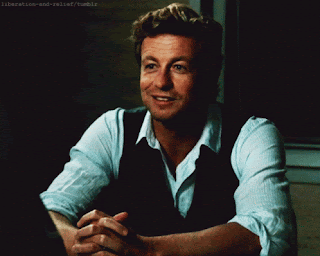I've already mentioned, that I got all the information and knowledge from the book 'The dictionary of body language'. I've been implementing the knowledge, not just into my deductions, but my personal life too. Today I'm going to list to you the most important things to look for on each and every body part. Now, I can't really do that in 1 sitting and mash it into 1 entry. I will do it in the form of a series on both here and tumblr. I'm going to be cutting the body into thirds and try to make a trilogy. We'll see. But now I'll start with the head.
The hair
As I stated in my previous body language blogpost
here. There are mainly pacifiers that we're looking for. Though read the entry to really get what we're talking about here.
The hair doesn't really have any nerve ending, but can still be quite helpful. Have you ever noticed that when students are writing a test they often toy with or brush through their hair. This is, Ladies and gentlemen, a pacifier. It can also be a restricting action. So what this action does, is: Letting more oxygen and air in to let the head breathe. Toying with the hair is also a pacifier. Touching the hair can also indicate flirting in the dating world.
The forehead & eyebrows
The forehead has a lesser amount of nerve-endings, but communication and non-verbal communication side can be very expressive. Like the raising of eyebrows and crunching your "foreskin" (I'm deeply sorry about the immature joke) revealing the expression of surprise . Crunching your eyebrows together and crunching the skin on the middle means doubt or worry. The lines that you often see on the foreheads of older people can be used when determining a person's age and/or usage of botox.
Remember when you were crunching together the skin on your forehead on the biology thest when you couldn't remember that the mytochondria is the powerhouse of the cell. Yes that is pretty universal. That is a pacifier to help with stress and people also use it to remember stuff in anxious situations.
The Lips
The lips are a very sentimaental area. We kiss with it, we eat with it etc. Naturally people tuch it to pacify themselves. This means, that when you see someone touching their lips under stress they do it to pacify themselves. Another very important thing to look out for, is lip compressions. When soeone does this, they do it to either relieve stress or to restrict themselves, likely of anger.
Usually, we don't see a certain indicator for deception, but gooper's delight is a very good exception. It is a little (could be assimetric) smile when talking. This accours because the person is happy because they think they've succesfully decieved you. This is a tell tale sign of deception in children and most adults.
Happy deducing!
.gif)

Comments
Post a Comment